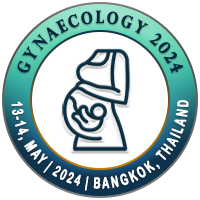
Fauzia Tamara Rauf
University of Sam Ratulangi, IndonesiaTitle: Accuracy of transperineal ultrasound examination in predicting vaginal delivery
Abstract
Background: The use of ultrasound can help determine the type of labor that should be performed, and whether the patient requires operative delivery. Ultrasound, particularly transperineal ultrasound, is considered to replace vaginal examination, which is considered subjective in assessing fetal stations. In previous studies, transperineal ultrasound parameters such as Head Perineum Distance (HPD) and Angle of Progression (AOP) were found to be more accurate than vaginal examination in predicting vaginal birth. However, these studies have not yet been conducted on the population of pregnant women in Indonesia.
Objective: This study aimed to determine the accuracy of transperineal ultrasonography (HPD and AOP) in predicting vaginal delivery.
Methods: This study utilized a cohort design and collected primary data through a consecutive sampling method. The study focused on pregnant women in the active phase of labor at Fatimah Hospital, Pertiwi Hospital, and Syekh Yusuf Gowa Hospital.
Results: Out of 150 participants, 95 experienced vaginal labor, while 55 required caesarean section. AOP and HPD parameters were found to be significantly different in both groups. The study found that an AOP value of greater than 110.45 had a sensitivity of 90.53%, specificity of 70.91%, PPV of 84.31, NPV of 81.25, and P <0.001. In contrast, the HPD value of less than 3.54 predicted vaginal success with a sensitivity of 94.54%, specificity of 83.16%, PPV of 85.87, NPV of 89.66, and P <0.001.
Conclusion: AOP and HPD parameters on transperineal ultrasound can be used to predict successful vaginal delivery.
Biography
TBA

